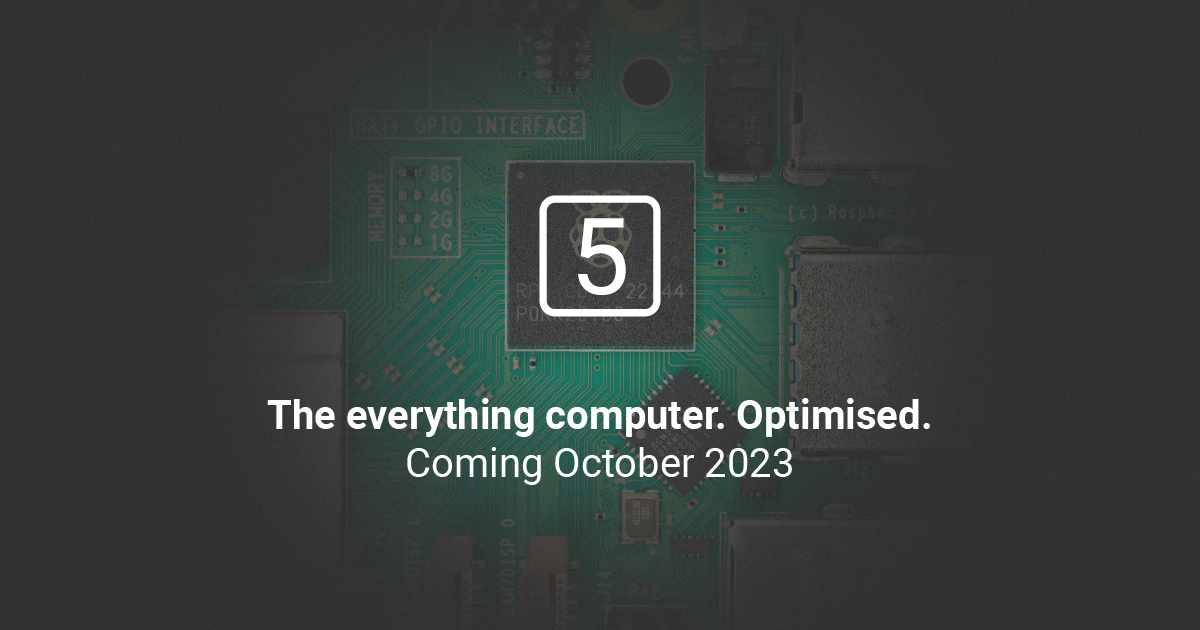- Broadcom BCM2712 2.4GHz quad-core 64-bit Arm Cortex-A76 CPU, with cryptography extensions, 512KB per-core L2 caches and a 2MB shared L3 cache
- VideoCore VII GPU, supporting OpenGL ES 3.1, Vulkan 1.2
- Dual 4Kp60 HDMI® display output with HDR support 4Kp60 HEVC decoder
- LPDDR4X-4267 SDRAM (4GB and 8GB SKUs available at launch)
- Dual-band 802.11ac Wi-Fi®
- Bluetooth 5.0 / Bluetooth Low Energy (BLE)
- microSD card slot, with support for high-speed SDR104 mode
- 2 × USB 3.0 ports, supporting simultaneous 5Gbps operation
- 2 × USB 2.0 ports
- Gigabit Ethernet, with PoE+ support (requires separate PoE+ HAT)
- 2 × 4-lane MIPI camera/display transceivers
- PCIe 2.0 x1 interface for fast peripherals (requires separate M.2 HAT or other adapter)
- 5V/5A DC power via USB-C, with Power Delivery support
- Raspberry Pi standard 40-pin header
- Real-time clock (RTC), powered from external battery
- Power button



Tbh, POE isn’t a feature most people need. And it’s quite expensive, takes up a lot of room, and generates quite a bit of heat.
You can get inline POE extractors that spit out 5v usb/jack or 12 jack. I use them quite a lot, and they are much cheaper than PoE hats
Yeah I just hate all the extra clutter the extractor adds. It’s really nice to just run some cat 6 to a Pi and call it a day. If I could spend an extra $50 to get a Pi or Pi-like device that came with PoE built in I would in a heartbeat.
I know what you mean.
The problem is, actual POE powered computers end up being commercial display drivers or embedded/industrial systems. And that means a significant increase in price.
These devices are often plugged into things that require power. At which point, you can just power it locally. So the added cost and complication of POE isn’t worth it.
Chances are, a lot of the things you are trying to do don’t need a full SBC and Linux. But I don’t know your situation.
Something like this: https://www.dfrobot.com/product-1286.html
Or this.
https://www.robotpark.com/Arduino-Ethernet-Microcontroller-With-PoE-Power-over-Ethernet-V3
If it’s something like a screen/touchscreen interface, theres already power there…
But you could use an android TV, there are some that are POE powered, but most displays have a power source these days.
Things like Bluetooth or whatever, you can probably get off-the-shelf extenders or repeaters.
I’d love it if it was more common, gives an easy way to remotely power cycle devices. But the ridiculous extra cost that PoE enabled general purpose devices come with just isn’t worth it for me.
Right now the main things I’m using it for is running PiHole and home-assistant, although there’s a few other network services I’d like to run on a couple Pi’s. So yeah, I can’t really use embedded devices for that. I could use something like a NUC, but that’s adding significant cost at that point, easily into the $200+ range, where I’m trying to keep it below $150. All my switches already provide PoE, and I need to run ethernet to the device anyway for network connectivity, so adding new PoE devices is literally just a single cable. If I’m powering them a more traditional way I’ve got to deal with a power brick and finding space in an already crowded UPS, or finding someplace to tack up a PoE extractor in a crowded shelf.